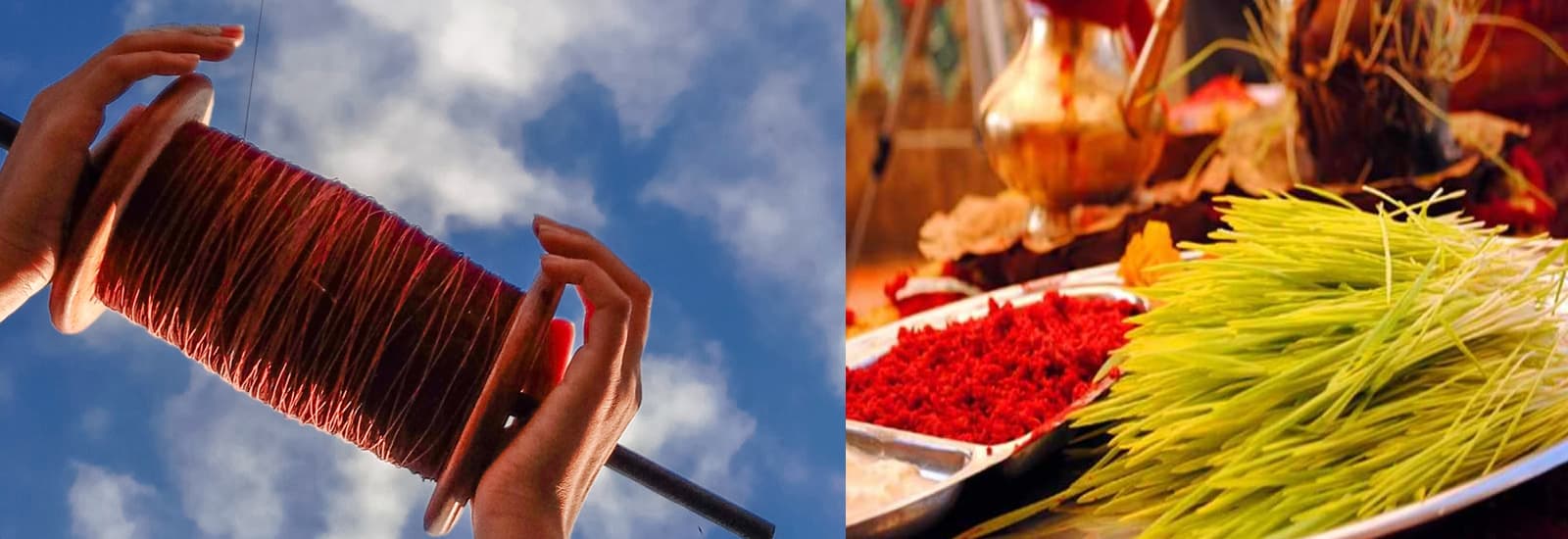Dashain the Biggest Festival in Nepal
Dashain, revered as the paramount Hindu festival in Nepal and among Hindus globally, stands as a symbol of tradition, faith, and celebration. Spanning from the bright moon to the full moon day of Ashoj/Kartik as per the Hindu calendar, it boasts the distinction of being the longest and most anticipated festival in the Bikram Sambat Calendar (often referred to as the Nepali Calendar). Its influence isn’t restricted to Nepal alone; the excitement for Dashain is palpable in regions like Bhutan, Myanmar, and northern India.
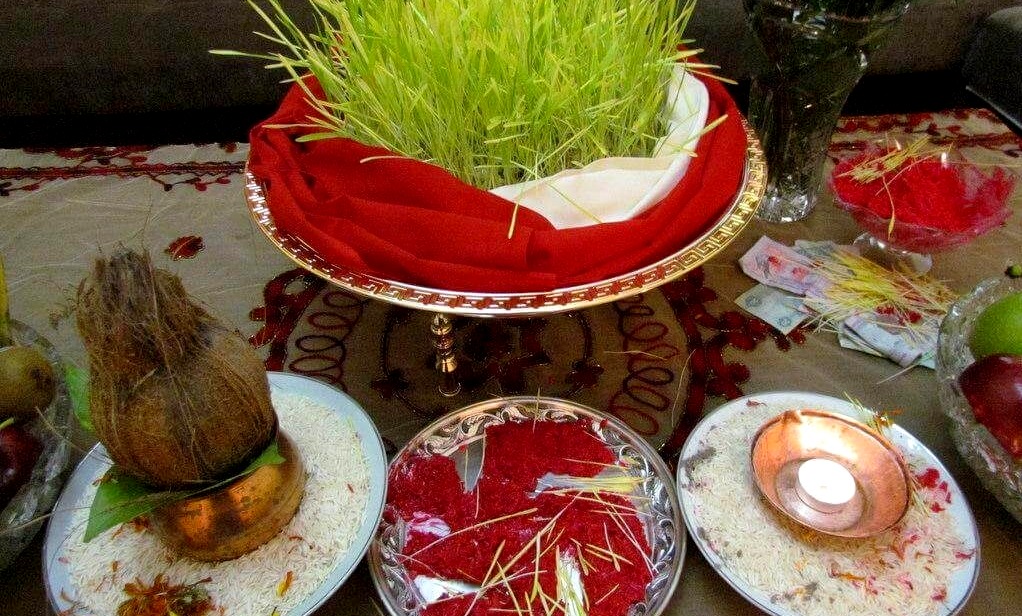
Delving into its mythological roots, Dashain commemorates the epic victory over the demon Mahisasur as detailed in the sacred Ramayan. In a bygone era, the malevolent king Mahisasur, masquerading as a formidable water buffalo, spread terror across India. It was the revered Hindu goddess Durga, often addressed as the Universal Mother of Goddess, who rose to the challenge. After a fierce battle spanning ten days, Goddess Durga emerged victorious on the tenth day, symbolizing the timeless theme of good prevailing over evil. This pivotal moment in mythology is the very reason why Dashain spans a full ten days, with special reverence given to worshipping goddess Durga. Aptly described, Dashain epitomizes the "triumph of good over evil".
Beyond its religious significance, Dashain is also Nepal's grand harvest festival, a time echoing with family reunions, heartfelt exchanges of gifts and blessings, and participation in numerous worships and puja programs. Mark your calendars, for this year, the Dashain celebrations commence from 7th October and conclude on 15th October, as per the Gregorian calendar.
Highlights of Dashain Festival
- Playing Kites: As Dashain approaches, the skies of Kathmandu and neighboring cities come alive with vibrant kites. It's a visual treat to witness hundreds of them soaring and dancing in the wind.
- Card Games: Elderly folks engage in spirited card games, making it a popular pastime during the festival. It's common to see groups engrossed in these games, often accompanied by delightful drinks and food.
- Home Decorations: Homes undergo a transformation with thorough cleaning and adorning with fresh paint and flowers. This beautification is symbolic, inviting the Hindu "mother goddess" to bestow blessings of luck and prosperity on the household.
- Shopping Spree: Dashain is synonymous with shopping! Be it new attire, dazzling jewelry, festive decorations, or unique design pieces, the markets are abuzz with enthusiastic shoppers eager to make new purchases.
- Bamboo Swings: A special attraction during Dashain is the temporary bamboo swings erected in open spaces within towns. These swings become hubs of activity, with locals organizing dance and song performances nearby, enhancing the festive ambiance.
- Animal Sacrifices: A significant and traditional aspect of Dashain is the sacrifice of animals. Thousands, including goats, buffalos, hens, and ducks, are sacrificed on the 8th and 9th days of the festival as offerings to the deities.
- Tika and Jamara Ceremony: A heartfelt ritual is when younger members receive blessings from elders. This involves the placement of Tika and Jamara on their foreheads. Alongside these blessings, it's customary for elders to gift money, referred to as “Dakshina,” to the younger ones, further strengthening familial bonds.
The Dashain Festival is a mosaic of traditions, rituals, and joy, offering glimpses into the rich cultural tapestry of the region
What is the purpose of the Dashain festival?
In Nepal, each celebration has a long history. The Dashain festival also has one that is thousands of years old. According to Hindu mythology, this festival was observed to commemorate the triumph of good over bad spirits or demons.
According to legend, the battle between the Hindu goddess Durga and the monster "Mahisasur" lasted nine days. Despite the demon's strength, Goddess Durga prevailed in the terrible battle and killed him. Her victory was acknowledged and applauded on the tenth day, and this festival has been going on ever since.
This festival's fundamental message is that goodness always triumphs over darkness. The elderly always describe this holiday to their children or grandchildren in the easy-to-understand importance of this celebration. The only message behind this holiday is simply that doing good deeds, helping others, and being kind to others always wins.
The Dashain Festival's customs
Every single day signifies certain religious purposes. There are many rituals, puja, and worship including fun and fiesta. The first, seventh, eighth, ninth, and tenth days of the fifteen-day Dashain Festival celebration are the most significant ones for enthusiastic Nepalese.
Day 1: Ghatasthapana is the very first day of Dashain (Sowing Jamara)
Ghatasthapana marks the commencement of the Dashain festivities in Nepal. On this day, a Kalash (sacred pot) is ceremoniously installed, filled with Ganga Jal (sacred water), and sown with barley seeds, which are then layered with cow dung. This pot dedicated to Maa Durga is carefully placed atop a rectangular block made of sand and sown barley seeds. Ritualistic chants are recited by the priest, symbolizing an invitation for Maa Durga to inhabit the vessel for the duration of the festival. With a belief that the goddess resides in the Kalash over the subsequent nine days, it's replenished daily with holy water and shielded from direct sunlight. This nurturing environment allows the barley seeds to sprout, reaching a length of approximately 15 cm. This consecrated grass sprouted from the seeds, is known as Jamara, a pivotal element used from the tenth day of Dashain up to the full moon day.
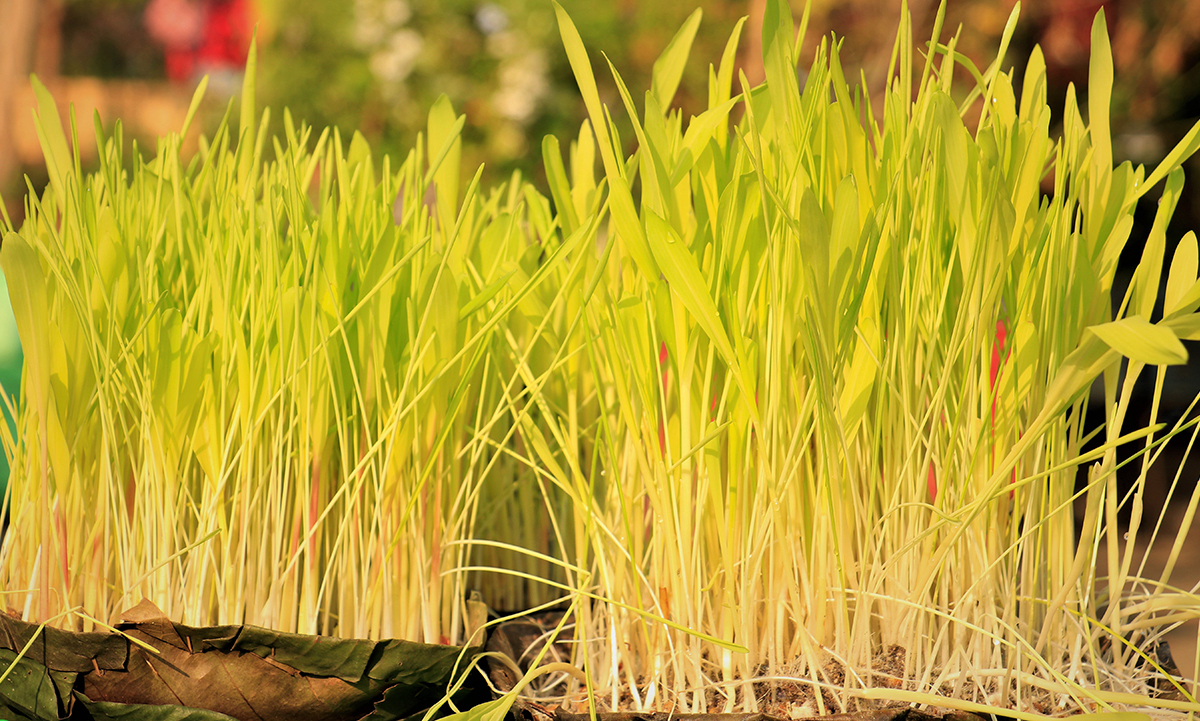
Day 7: Fulpati, presenting sacred flowers
In the heart of Nepal, the seventh day of the Vijaya Dashami festival is uniquely distinguished as Fulpati, an event characterized by the introduction of nine types of Phulpati into the sacred worship room dedicated to Goddess Durga and the ceremonially crafted pile of sand. Ancient myths articulate that the Phulpati symbolizes the presence of all nine goddesses, with each plant exemplifying a particular deity. The act of welcoming Phulpati into one's abode is more than a mere ritual; it's an emblematic gesture, signifying the ushering in of health, wealth, and prosperity.
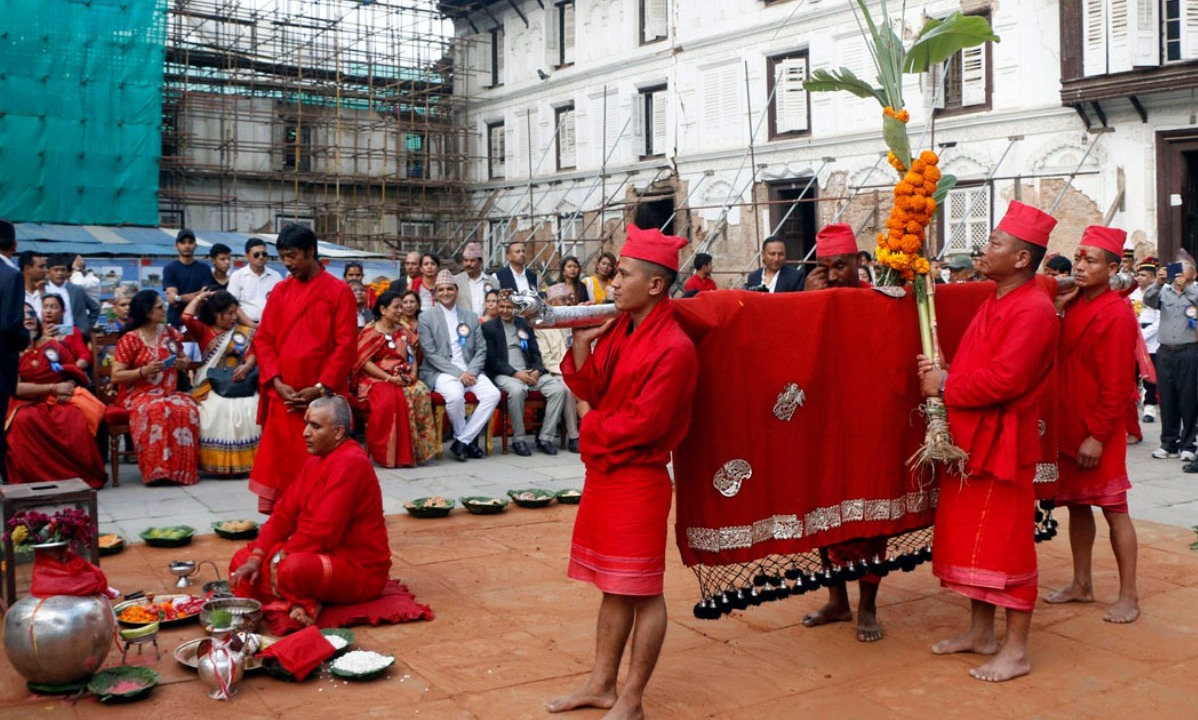
Kathmandu, the vibrant capital of Nepal, becomes the focal point of this day's festivities. A significant celebration unfolds at Tundikhel, a central locale in the city. Here, a cannon fires in jubilant commemoration, marking the high point of the Fulpati festivities. Furthermore, in a majestic display of tradition, Brahmins transport the royal Kalash, sacred Jamara, banana stalks, and sugar cane, all bound with red cloth, from Gorkha to Kathmandu. This ceremonial journey not only connects two significant locations but also allows attendees to appreciate the scenic beauty en route.
8th Day: Maha Asthami, slaughtering the livestock
The eighth day of the Dashain festival, known as Maha Asthami, holds particular significance in the Nepalese tradition. On this poignant day, Goddess Durga transforms into her most fierce avatar, Kali, who has an insatiable thirst for blood. To appease her, devotees offer the blood of buffaloes, goats, ducks, and hens in temples spread across the country. The offering of blood is not merely a ritual but holds symbolic value, representing fertility and the life force.
The night following the sacrifices is termed Kal Ratri or the 'Black Night'. In keeping with the gravity of the day, numerous animals are sacrificed in the courtyards of land revenue offices throughout Nepal, underscoring the widespread nature of this tradition. Post-sacrifice, the meat is taken home and is reverently referred to as Prasad. Consuming this Prasad is believed to bestow good luck and blessings upon the devotee, intertwining the act of sacrifice with the promise of divine favor.
9th Day: Maha Navami
The ninth day of the Dashain festival, Maha Navami, holds deep-rooted significance in the tapestry of Nepalese traditions. As per ancient legends, Maha Navami commemorates the day when Goddess Durga, in her fiercest form, vanquished all demons, signifying the ultimate triumph of good over evil.
On this pivotal day, rituals and ceremonies ascend to their zenith. Worship extends to God Vishvakarma, the deity of creation and craftsmanship, embodying the spirit of prosperity and innovation. It is a time-honored belief that on this day, by honoring Vishvakarma and the instruments of creation, one can imbue them with divine blessings, ensuring prosperity and happiness. To do so, many tools and implements are sanctified, and sacrifices of animals are made as offerings.
A special highlight of Maha Navami in Nepal is the rare opening of the Taleju Temple gates to the general public. This temple, dedicated to the goddess Taleju, witnesses an influx of thousands of devotees on this particular day. Eager worshippers queue up in serpentine lines, awaiting their turn to step into this sacred space, seeking the goddess's blessings and expressing their devoutness. This shared moment of faith showcases the community's reverence and unity during the Dashain festival.
10th Day: Vijaya Dashami (Receiving Tika from elder relatives and family members)
On this significant day of the Dashain festival, elders in the family bestow Tika and Jamara upon the younger members, imparting blessings and well-wishes. As a mark of reverence and anticipation, every household undergoes a thorough cleaning and is adorned with decorations, symbolizing a heartfelt invitation to Goddess Durga. It's a deeply held belief that such acts beckon the goddess to grace the dwelling, showering it with prosperity and good fortune.
Vijaya Dashami isn't just a religious observance; it's a vibrant occasion akin to a family reunion. Homes resonate with laughter and joy, as families gather, relishing an array of delectable dishes, indulging in card games, and soaring kites in the open skies. Amidst the festivities, it also offers a moment of respite to the working populace, allowing them to rejuvenate and wholeheartedly participate in the celebrations.
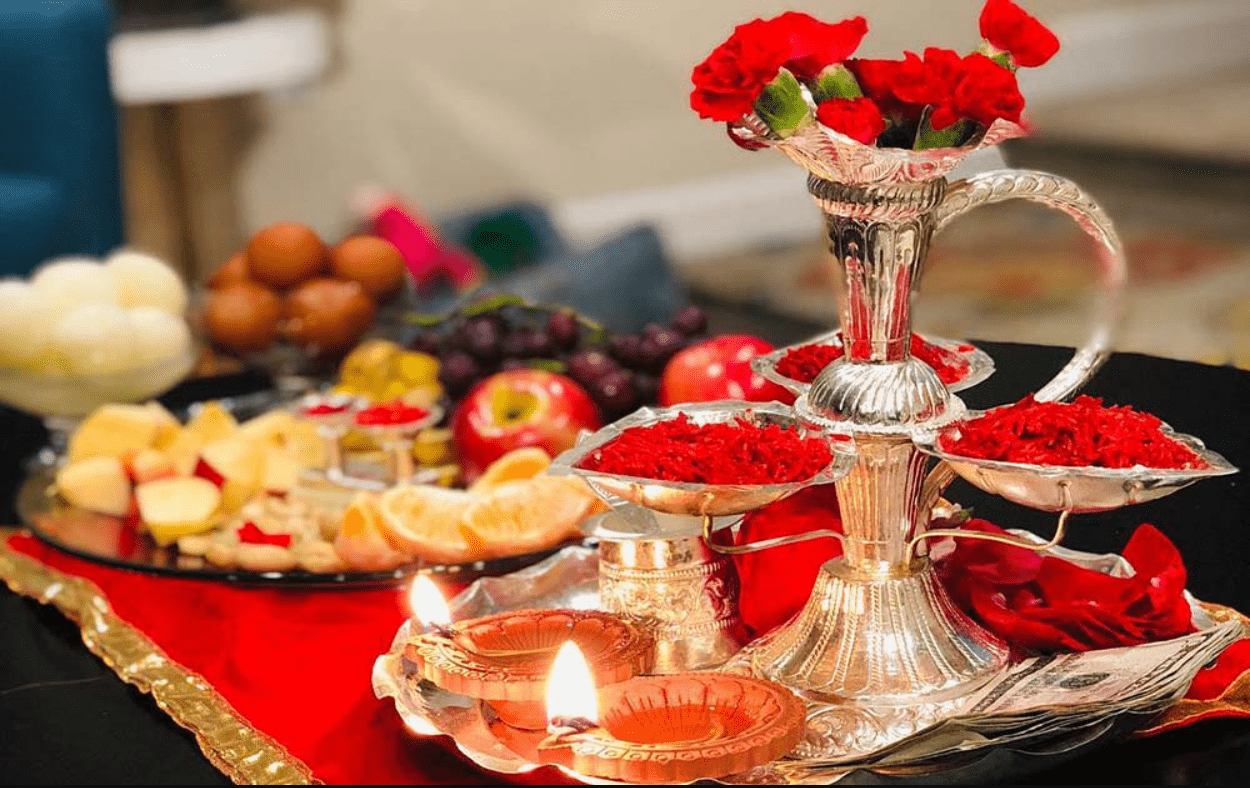
15th Day: Kojagrata Purnima
Marking the culmination of the Dashain festival is the Kojagrata Purnima, a luminous full moon night dedicated to invoking blessings of prosperity and fortune. The name "Kojagrata" translates to "those who remain awake", emphasizing the tradition of keeping a night-long vigil.
On this revered night, it's believed that Goddess Laxmi, the deity of wealth and prosperity, descends to Earth. She showers her blessings upon those who, in a mark of dedication, stay awake throughout the night. This belief has transformed Kojagrata Purnima into a unique occasion for many Nepalese. The night becomes an opportunity, or rather an excuse, for people to engage in games of chance, turning it into a lively evening of gambling and camaraderie
Why is Dashain called the biggest festival?
Dashain stands unparalleled as the lengthiest festival in Nepal's vibrant tapestry of celebrations. It transcends boundaries, bringing together people from diverse communities, ethnicities, and backgrounds to revel in its festivities in their distinctive manner. This grand festival carves out a special time for families and relatives to congregate, fostering bonds and creating memories.
During Dashain, it's customary for individuals to indulge in new attire and household items, infusing their homes with a renewed vibrancy. It becomes a period of relaxation, with extended holidays allowing families to reminisce about past experiences, indulge in hearty meals, savor drinks, and engage in playful activities with children. A hallmark of Dashain celebrations in many communities is the construction of bamboo swings at communal centers. These swings aren't just playthings but symbols of shared joy, where people come together to experience collective happiness and camaraderie.
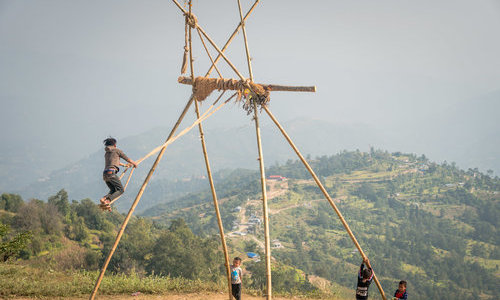
There's truly nothing like immersing oneself in the rich tapestry of Nepali celebrations, feeling the vibrant energy, and observing the radiant smiles that reflect the essence of its culture. Add to this the allure of delectable Nepali cuisine, each bite narrating tales of traditions and love. If this evocative imagery stirs a desire within you to experience the festivities first-hand, then look no further. Join us at Luxury Holidays Nepal for an unforgettable journey into the heart of Nepal during this special festival. Dive deep into the cultural kaleidoscope and let the rhythms of Nepal enchant your soul.
If you need any further information, please contact us by email: [email protected], Phone: +977- 985 100 5129 (WhatsApp)
#Tags
Tripadvisor
5.0928 reviewsGoogle
4.8114 reviewsFacebook
4.1 recommend44 ReviewsTrustpilot
4.1 Great(5 reviews)- Trusted by50K plus traveller

